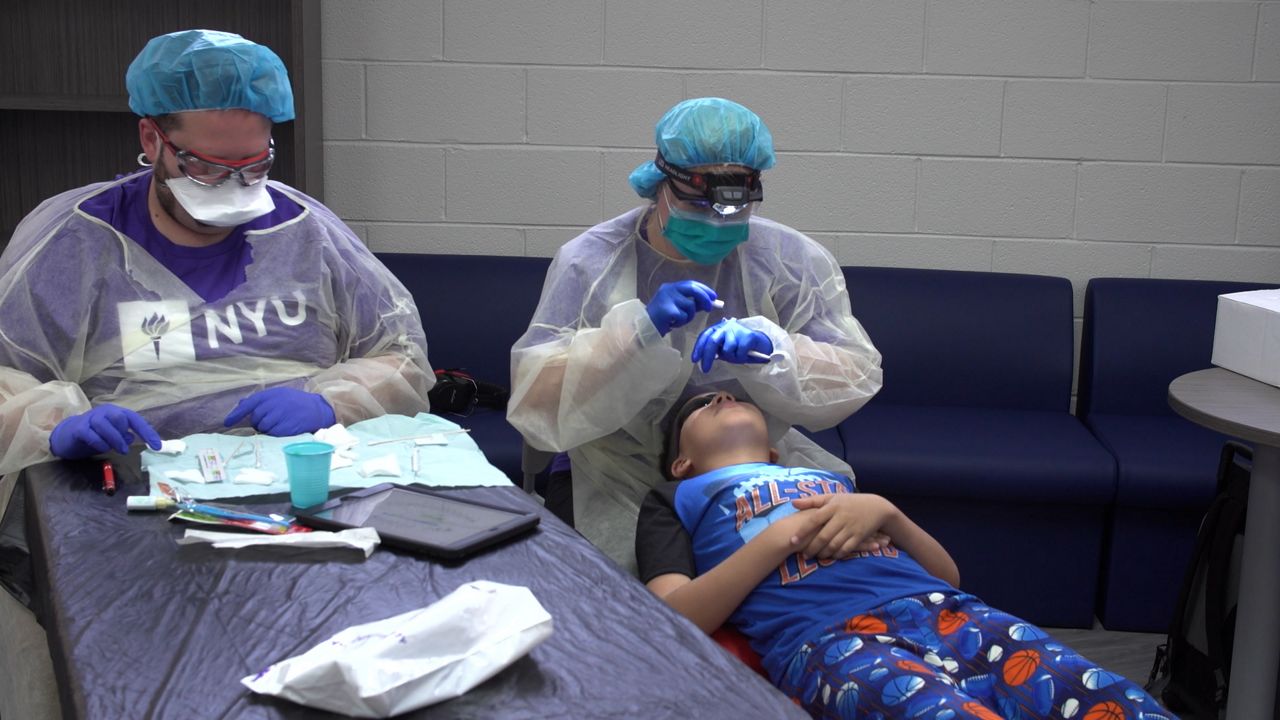Preventing tooth decay takes work, at home and typically involves bi-annual tooth cleaning appointments. For many families there are significant barriers to getting their children to the dentist. National Health Reporter Erin Billups takes a look at work underway laying the groundwork for more efficient, affordable dental care for kids.
Preventing tooth decay, particularly in kids, can be a logistical hurdle for many families.
“That could be cost, it could be distance and travel to the nearest dental office. It could be fear, a lack of knowledge or awareness of the importance of dental cavities or just culture,” said Dr. Tamarinda Barry-Godin, an assistant research scientist at NYU’s Department of Epidemiology & Health Promotion.
Barry-Godin helps lead CarriedAway, a group of dental researchers and nurses from New York University who are trying to determine the most effective and least costly way to prevent and treat cavities in kids. She says cavities play a role in the complex issue of chronic absenteeism among many students from low-income households.
“When a child is in pain, they have the incredible ability to habituate that pain. But it doesn't mean that it's not impacting them in their full potential. And so what we're trying to do is protect that potential,” said Barry-Godin.
We shadowed the CarriedAway team as they treated students at Public School 306 in the Bronx.
Principal Darryl Harrington said the school joined the study after providers in its school-based health clinic noticed a great need for dental care among the student population.
“When there are deficiencies in our health care, it does impact their overall performance when it comes to attendance, when it comes to participating, when it comes to them overall feeling secure and safe in the school. All of that is impacted,” said Harrington.
The Bronx school is one of 47 elementary schools in low-income neighborhoods participating in the study.

“There's no drilling, there's no filling,” said Barry-Godin. “There's no splatter, there's no spray, there's no aerosols.”
Third grader Fatou Jamigeh said she doesn’t mind visiting the Carried Away team. “It doesn't hurt your teeth,” she said.
Fourth grader Nicole Gonzalez said she used to be afraid of the dentist, but isn’t when she is treated at school. “They are gentle with my teeth and they make it shine,” said Gonzalez.
CarriedAway’s study with nearly 3-thousand children is published in JAMA Open.
Students at some of the participating schools receive the common dental sealants and fluoride treatments recommended by the CDC for schools in underserved areas.
The teeth of students in the other cohort of participating schools- are treated with a substance called silver diamine fluoride. Researchers found it’s just as effective as the more costly and time consuming sealants.

“Children don't have to leave school and we're able to prevent 80% of decay and arrest 50% of decay. With just about 15 minutes outside of their classroom visit,” said Barry-Godin.
Harriginton said they have seen a difference among students over the last two years. The school too, does its part to get as many kids as possible into the dental chair.
“We're all having pajama day today. The kids are excited and when we have events like that, it promotes attendance,” said Harrington."This will be the perfect timing for NYU to come in and provide those services to children and then go back to class and everybody's happy.”
The CDC currently funds school-based sealant programs in 20 states. Depending on laws in a particular state, the sealants are applied by a dentist, dental hygienist or other qualified dental professionals.
CarriedAway’s hope is that once grant funding for their research runs out, their data will help encourage more schools to expand dental services on-site. Using silver diamine fluoride actually requires less tools and training.
“What we found is that registered nurses were not any different than dental hygienists in preventing and arresting cavities,” said Barry Godin. “If you project that out, it means that school nurses across the country could ostensibly receive training to do silver diamine treatments in schools and therefore have a greater reach and greater impact.”



